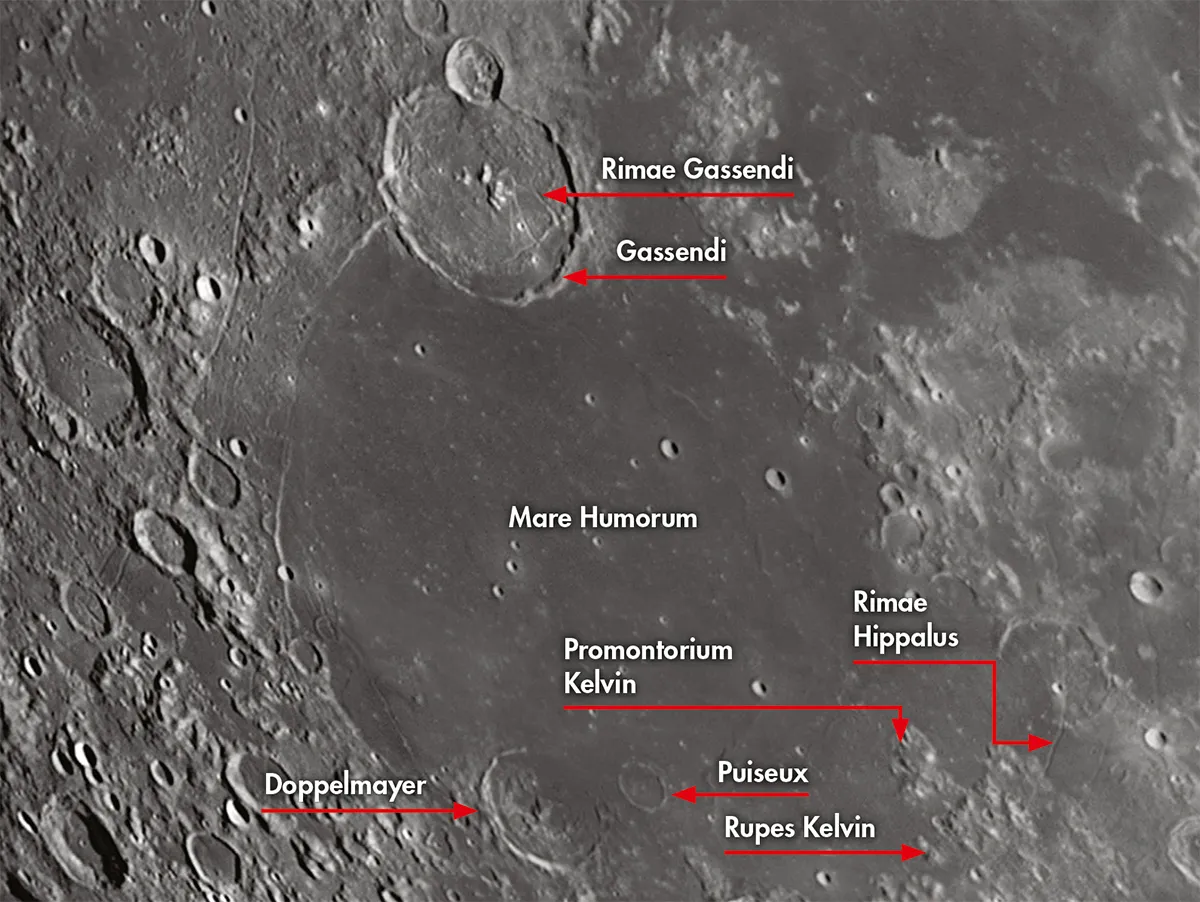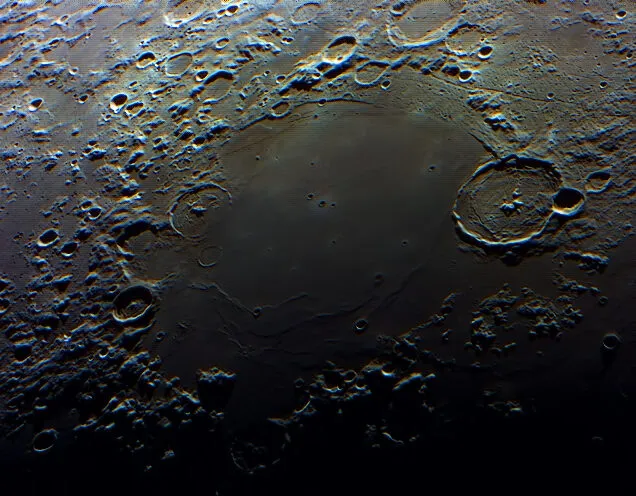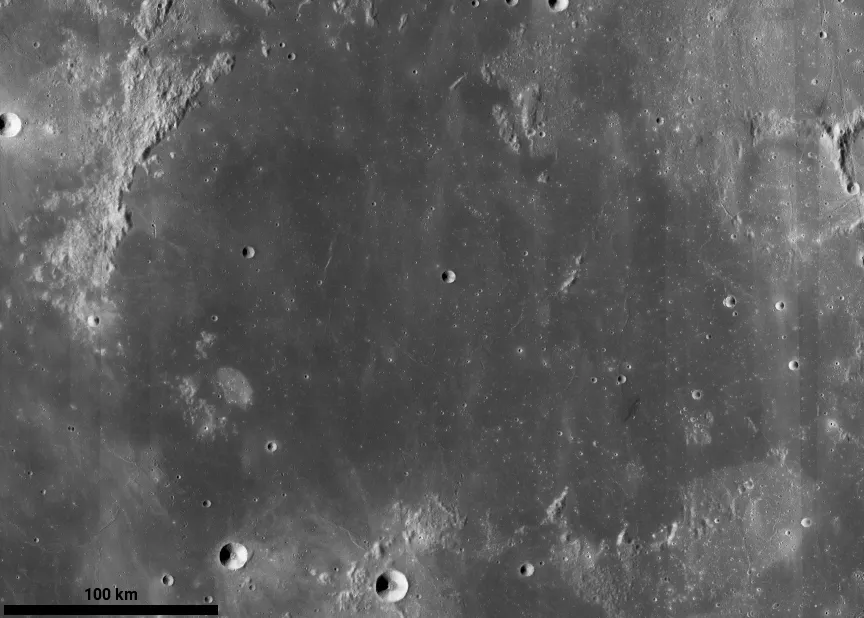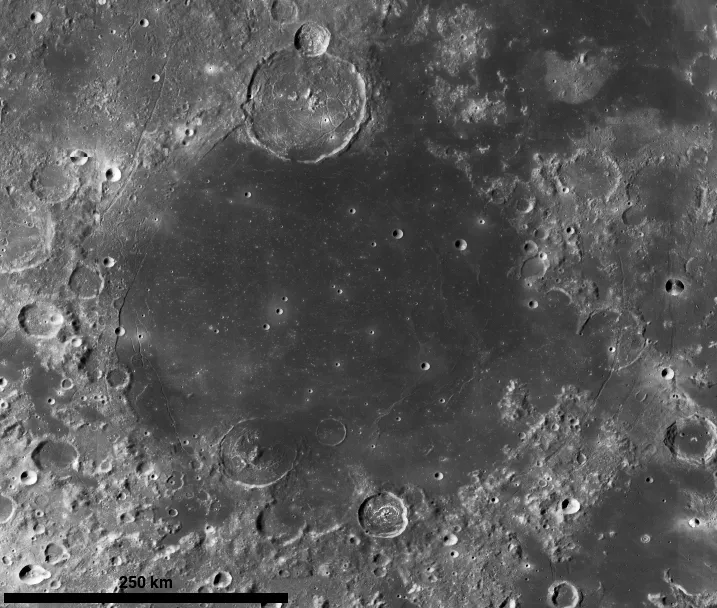The Mare Humorum, or Sea of Moisture, is a circular feature that appears foreshortened into an oval when viewed from Earth. The surface of the sea is fairly regular at first glance, but slowly reveals extra detail on closer examination.
Under oblique illumination, for example, there is a set of concentric wrinkle ridges to the east of the mare, running parallel to its shore.
For more info on lunar observing, read our guides on how to observe the Moon and the best features on the Moon.

Facts about Mare Humorum
- Size:390km
- Age:Between 3.85 and 3.92 billion years
- Location: Latitude 24°S, longitude 39°W
- Recommended observing equipment: 3-inch telescope
The process behind the formation of lunar maria like Humorum starts with a large impact that cracks the lunar crust. The depression created by the impact then fills with lava, which wells up through the cracks from below.
The lava buckles as it cools, forming low-profile ridges that appear concentric to the basin edge.
The ridges can be tricky to spot under high illumination, but when the light is coming from the side their elevated height causes them to cast shadows.

Beyond the shore, past the wrinkle ridges to the southeast, is a series of rilles known as the Rimae Hippalus.
Between these features lies a solitary island, which appears isolated on the lava plain that surrounds it. This is the Promontorium Kelvin.
It is flanked to the southeast by the mountain range known as the Rupes Kelvin, named after William Thompson, Lord Kelvin, another feature that appears to run parallel to the shore of the Mare Humorum.

The mare’s floor is littered with small craterlets, the largest of which is about 10km across. The most prominent craters sit on the mare’s northern and southern shores.
On the southern shore, 66km crater Doppelmayer appears to be sinking into the mare’s lava. The southern half of Doppelmayer’s rim is well defined, as is its lofty central mountain peak.
However, the northern edge disappears under the mare. East of Doppelmayer is 26km crater Puiseux.

This one lacks the magnificent central peak of its larger neighbour and its floor completely flooded by Humorum’s lava.
However, Puiseux’s entire rim is above the mare’s floor, creating a feature known as a ghost crater.
The northern shore is marked by the impressive, 114km-wide Crater Gassendi. Within its rim is the network of cracks known as Rimae Gassendi, various hills and a double mountain peak.
On the western shore, a mountain range curves south and west of Gassendi. Between it and the mare floor lies a ‘beach’ of rugged material that stops abruptly as it encounters the smooth mare.
The beach is flanked by a scarp, or cliff. It is visible adjacent to the rim of Gassendi, then disappears for some 110km before reappearing and stretching almost all the way down to Doppelmayer.

